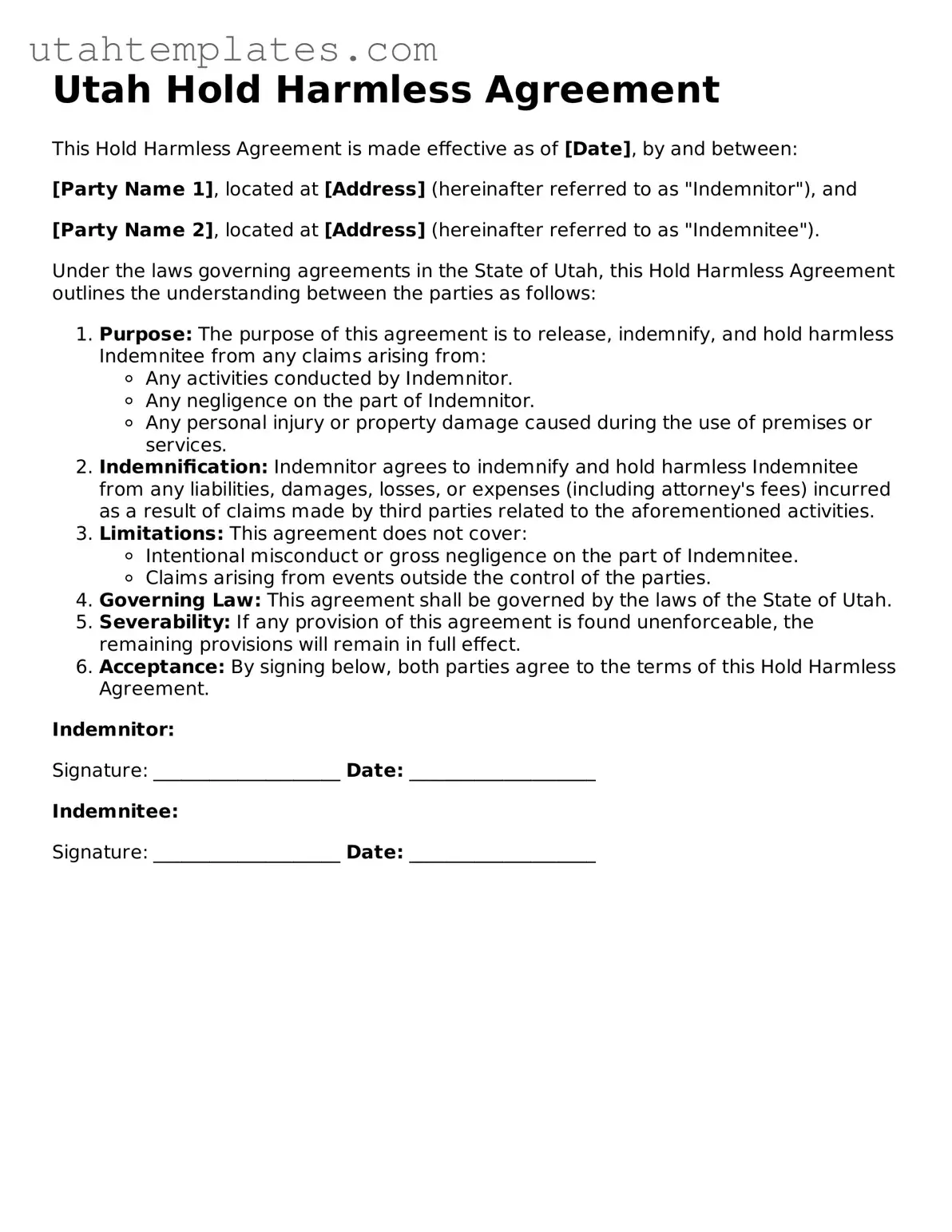When completing the Utah Hold Harmless Agreement form, individuals often overlook critical details that can lead to complications. One common mistake is failing to provide complete and accurate information. This includes not filling in names, addresses, or dates correctly. Incomplete information can result in the agreement being deemed invalid.
Another frequent error is neglecting to read the entire document before signing. Many people rush through the process, missing important clauses that outline their rights and responsibilities. Understanding the terms is essential, as it ensures that individuals are fully aware of what they are agreeing to.
Some individuals mistakenly assume that a verbal agreement is sufficient. They may discuss the terms with the other party but fail to document these discussions in the form. Without written confirmation, the agreement may not hold up in a legal context.
Additionally, people sometimes forget to date the agreement. A missing date can create ambiguity about when the agreement was made, which could be crucial if a dispute arises later. Always ensure that the date is clearly noted.
Another common oversight is not having the agreement witnessed or notarized when required. While not all agreements need witnesses, some situations do. Failing to follow these requirements can undermine the document's validity.
Misunderstanding the scope of the agreement is also a prevalent issue. Some individuals may not realize that they are waiving certain rights by signing the document. It is important to comprehend the implications fully before proceeding.
People may also neglect to check for any additional requirements specific to their situation. Different circumstances may require additional clauses or specific language to be included in the agreement. Not doing so can lead to gaps in protection.
In some cases, individuals may attempt to use a generic form without tailoring it to their specific needs. Each situation is unique, and a one-size-fits-all approach can lead to significant legal pitfalls.
Finally, individuals sometimes fail to keep a copy of the signed agreement for their records. Having a copy is crucial for future reference, especially if disputes arise. Without it, proving the terms of the agreement can become challenging.
By being mindful of these common mistakes, individuals can ensure that their Utah Hold Harmless Agreement is completed correctly and provides the intended protection.
